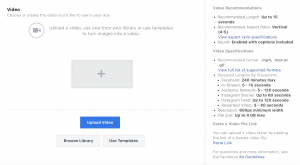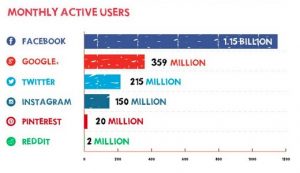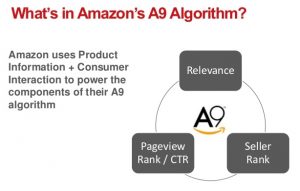In a span of only a few months, the online commerce space leaped years forward, to name a couple of examples: US online sales grew 76.2% year over year in June 2020, and Canada reports 110.8% growth year over year for May 2020.
If you compare these numbers to last year’s data, you will see that in 2019 US online commerce grew only by 14.9% compared to 2018. This data highlights the incredible leapfrog eCommerce sales had, several years projected to grow in just several months.
Looking into the brand level, quite a few brands report higher than expected online sales (In fact, some brands report that eCommerce is the only sales channel growing these days). Brick and mortar store revenues are mostly declining (social distancing and all…)
To quote a few recent headlines to that effect –
- CNBC – Nike’s digital sales soar 75%
- Yahoo Finance – P&G reports unprecedented numbers amid coronavirus pandemic (Due to 35% eCommerce growth)
- Financial Times – L’Oréal Q1 2020: eCommerce saves the day (53% growth)
With eCommerce and D2C (Direct to Consumer online sales by brands) booming, who wouldn’t want to listen to feedback on that channel?
What is eCommerce Listening (Hint – not Social Media)
eCommerce Listening is about mining feedback from consumers from online stores.
Online stores include marketplaces, brand stores, and media stores (apps, music, etc.).
Consumer feedback online is typically provided by for of ratings and reviews (Referred to sometimes as R&R). Rating is typically a 1-5 scale star rating score. Reviews are free-form text feedback where consumers typically provide feedback about the product or service, the purchase experience, supply chain aspects (availability, shipping), and general brand feedback.
Because this feedback comes from online stores, it is typically of high quality, meaning:
- Low ratio of noise-to-insights (Low “chatter”, unlike social media)
- High level of granularity (Detailed feedback)
- Store-specific (Commenting on the specific experience within one online store)
There is a common misconception that to understand what is happening “online” one should leverage social media listening. However social media listening is very different then eCommerce Listening. Typically, Social Media Listening is about the following capabilities:
- Access to all relevant social media platforms
- Real-time listening and alerting (Is there a hype cycle?)
- Sentiment analysis (Is the hype cycle good/bad?)
- Brand perception (While we listen, let’s understand what is said about our brand)
- Influencer identification (Who is more influential in my industry)
But in the context of online sales (eCommerce, D2C) these abilities are hardly useful as you do not get feedback at the SKU/product level, and the feedback is not commerce focused (no shopping/availability type feedback – which is the majority on eCommerce).
Why eCommerce Listening is critical
3 key reasons:
- eCommerce is becoming a major revenue channel: Driven by social distancing and pure convenience online commerce is on the path to become a major part of the economy. In 2019 it was 16% of US retail sales. But if US online sales almost double this will become ~30% in 2020… buying behaviors could extend beyond the pandemic
- Consumer shift in behavior can continue post-pandemic: While social distancing is pushing more and more consumers to shop online, these habits and the ease of getting the goods directly to your home may actually drive the consumer to continue to shop online even post-pandemic. One could even argue that this push could drive more and more consumers to go online for shopping vs. traditional retail purchases.
- In uncharted territory, look at what is working for others: Unlike traditional retail stores, analyzing online performance and satisfaction of other brands/products is much easier. You can compare how well your lead product is doing vs. the lead competitor simply by listening to and analyzing online ratings and reviews. This could be a great shortcut to understanding what is working well for others as you evolve your eCommerce strategy.
In short, this can’t be ignored, as there is too much at stake, and brands need to be present online, listening and improving product/service/experience exactly like they do in stores for traditional retail.
Risk of relying on past tools
It is critical to note that eCommerce Listening is about mining feedback of consumers from online stores (Including marketplaces, brand D2C stores, and media stores) for the benefit of understanding and improving store performance at the store/brand/product level.
With the booming volumes of online shoppers, relying on feedback solutions that sample some of the buyers like surveys, chats, or feedback solutions, or relying on feedback from other channels like the call center or social media listening will not cut it.
You simply can’t service properly millions of buyers and sample feedback from 5,000 or from people outside your store. Not if you want to seriously optimize your online performance.
Conclusion
The leap forward of online commerce is a huge opportunity for everyone. For brands, it offers great potential to grow sales, improve margins, and foster a more personal link to your customers. In parallel, it makes it easier to peak into your competitor’s stores and see what is going on there – what is working or not. For consumers obviously a better, easier, and more personalized shopping experience makes things convenient and builds better trust with your favorite brands.
The only challenge here is how to make sure that on the path to doubling your eCommerce revenue you don’t miss out on your new “storefront” dynamics and are constantly analyzing and benchmarking what is going on in your store and in your competitor’s stores. eCommerce moves so quickly that one miss could become very, very expensive for a brand.
Digital & Social Articles on Business 2 Community
(61)








